Dear patients, Happy summer! We hope everyone is well and enjoying the delightful weather. This edition will cover dry eye disease, our new imaging equipment in Bolton, and the latest updates about the Ontario Association of Optometrists’ Save Eye Care campaign.

Whether it was long Zoom meetings, online school, or binging another Netflix series, we all experienced an increase in time spent doing near work and being in front of screens during the pandemic. During the long hours reading or being at the computer, do you experience tearing, fluctuating vision, or a burning or gritty feeling in your eyes? These are common symptoms of dry eye disease!
Our natural tears are important for the health and comfort of our eyes. With each blink, tears spread over the front of the eye to lubricate and nourish the cornea; provide protection from dust, wind, bacteria and other foreign particles; and allow for clear vision. Dry eye disease occurs when the eye does not produce enough tears, or if the tears are not of good quality. Causes include aging, certain medications, hormonal changes, inflammatory health problems, and improper and/or infrequent blinking (which most commonly occurs while we are at a computer screen for long periods of time!).
Artificial tears are one way to manage dry eyes but may not be enough. If you are experiencing any of the above symptoms, see your optometrist for an eye exam and proper recommendations!

We are excited to present our newest piece of equipment in Bolton: our combined OCT/fundus camera system!

In addition to taking retinal photos, this device is capable of optical coherence tomography (OCT), an imaging technique that captures high-resolution, cross-sectional images of the retina and optic nerve using light waves. OCT imaging is non-invasive, fast, and does not require dilation drops; and is important in diagnosing, monitoring and providing treatment guidance for many eye diseases such as glaucoma, age-related macular degeneration, epiretinal membranes and macular holes.
Previously, OCT tests were scheduled every month or every other month. With this technology now available in-office, we can have these tests done immediately, allowing for the doctors to have your results analyzed sooner and provide a higher standard of care. Ask your optometrist if you are a candidate for this technology!

In 1989, the Ontario government paid $39.15 to cover an OHIP eye exam. Thirty-two years later in 2021, the average payment is about $44.65. This amount does not come close to covering the cost (including rent, staff, utilities, equipment, supplies and taxes) to provide an eye exam.
We are asking the Ontario government to commit to formal negotiations before September 1st, 2021, to discuss the future of eye care and to create a sustainable system that will allow optometrists to provide quality eye care, and to ensure eye care is accessible to all Ontarians. At the time this newsletter is received, there are less than 45 days to this deadline, and we have not yet had a response from the government.
As of July 14th, over 72,000 Ontarians have sent letters to their local MPP; and another 50,000 have signed the petition in their optometrists’ office across the province. We are grateful for the support we have received and the conversations we have had with many of you over the past few months. We encourage everyone to follow the Ontario Association of Optometrists and our office on social media to stay informed of any developments. If you have not already visited www.saveeyecare.ca, please do so to learn more about our campaign and submit an auto-generated letter to the Premier, Minister of Health, and your local MPP.
We hope you will stand with us so that you and your family can continue to access high-quality eye care that is timely and close to home.
Thank you for reading this edition of our newsletter! Until the days grow shorter and the leaves turn red, we wish you all a wonderful summer.


